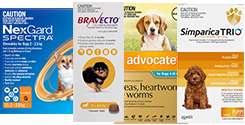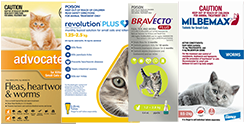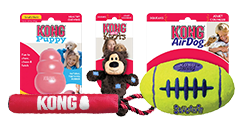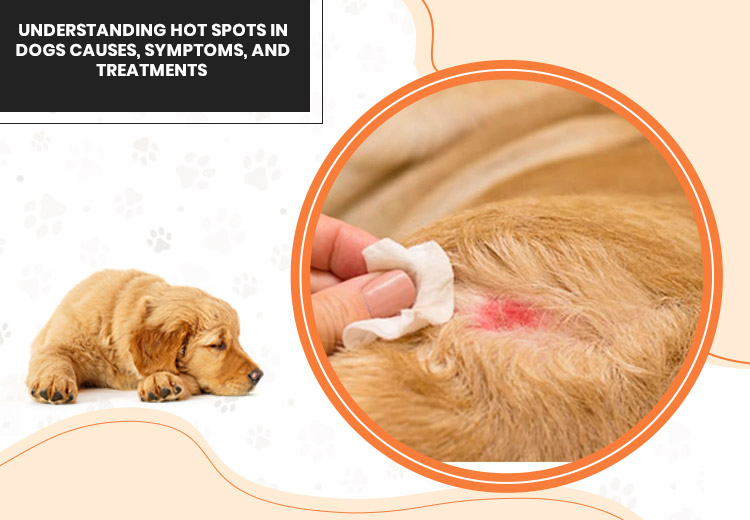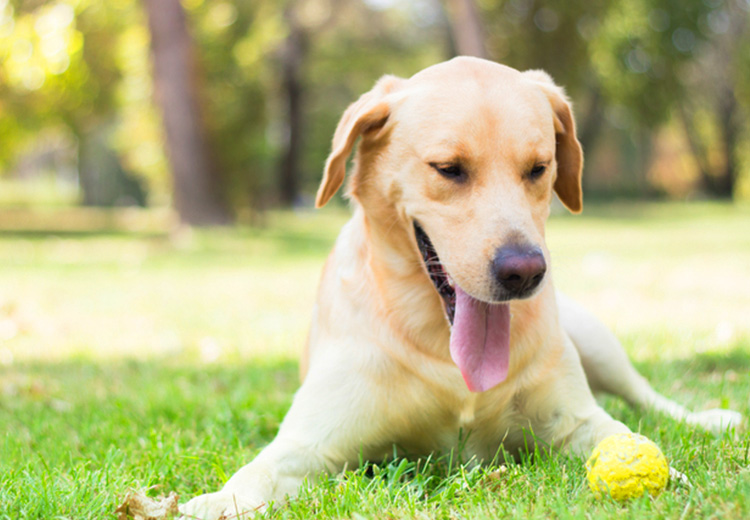Scratching and licking are the natural behaviors of any dog for grooming themselves or tending to an inconvenience. However, if you notice your dog scratching, biting, or licking excessively, it can be indicative of a skin condition known as hot spots. It is one of the most common skin conditions in dogs and very painful for them, making it crucial for dog guardians to be aware of its fundamentals.
In this article, we’ll equip you with information about the symptoms, causes, and treatments of hot spots. We’ll also discuss some effective preventive measures to prevent hot spots in your dog.
So, stick till the end!
What are Hot Spots in Dogs?
Hot spots, also known as pyotraumatic dermatitis or acute moist dermatitis, are red, painful, inflamed skin lesions, usually containing pus. They can show up anywhere on the body but are most commonly found on the face, neck, limbs, or hips.
They are not contagious and if left untreated, hot spots grow dramatically, causing greater discomfort for your dog. They appear as a small red area caused by anything from a flea bite and skin infection to a small graze. With constant licking, scratching, or chewing, it can develop into a red hot spot, emitting a nasty odor and sometimes bleeding.
Here are the common symptoms of hot spots in dogs:
- Reddened skin
- Inflammation
- Excessive itching and scratching
- Hair loss
- Pain and discomfort
- Moist, oozing sores
- Odor
What Causes Hot Spots in Dogs?
Hot spots in dogs are usually caused by excessive scratching to soothe the itching that can be caused by varied reasons. Some of these reasons are discussed below:
Allergies:
There are varied factors, such as flea bites, food, or environmental factors like pollen or chemicals, that can cause skin allergies. To soothe these allergic reactions, dogs often indulge in excessive itching and licking, leading to hot spots.
Poor grooming:
The lack of a regular grooming routine can result in matted fur and trapped dirt, causing irritation and scratching, which leads to hot spots.
Moisture:
Excessive moisture on the skin provides an ideal space for bacteria to grow and lead to hot spots. This is particularly common in dogs with thick or long coats.
Parasites:
Bites from fleas, ticks, mites, and other parasites cause overwhelming itching, and with excessive licking, biting, and scratching, dogs develop hot spots.
Ear infection:
Chronic ear infections can cause irresistible itching, leading to hot spots due to over-grooming.
Boredom or stress:
Like humans, dogs can also indulge in bad habits as a coping mechanism to deal with boredom or stress. They usually start to excessively bite or lick their skin, which can cause hot spots.
Treating Hot Spots in Dogs
When you’ve identified hot spots on your dog, take them to the vet for prompt treatment. The veterinarian will detect the underlying factor responsible for the hot spots and recommend a suitable treatment plan.
Here are some general steps you can take to support the treatment after consulting with your vet:
- Trim the hair around the hotspots for better air circulation.
- Clean and disinfect the area with an antiseptic topical.
- Use an Elizabethan collar or E-collar to keep your dog from licking and biting the hot spot.
- Practice a dietary change if food allergies are detected.
- Use remedies to reduce the inflammation and treat the infection.
Preventive Measures for Hot Spots
Here are several practices that you can use to safeguard your beloved dog from hot spots:
- Be consistent with the grooming routine and regularly brush the hair to maintain airflow and prevent matting and tangles. It’s especially crucial for dogs with thick or long coats.
- Maintain a healthy and balanced diet with appropriate nutrients to support their skin health. Also, keep in mind the foods your dog is allergic to while planning the meals.
- Ensure your dog is dried thoroughly after swimming or bathing to avoid the growth of bacteria.
- Consult your vet and timely administer flea and tick treatments to control parasite infestations.
- Maintain regular visits to the vet to catch the early signs of hot spots and tend to them promptly.
Final Words
Hot spots in dogs can be challenging to deal with; however, with the information covered in this blog, you can be better prepared to help your pooch. Now, put this information to use and tend to the needs of your scratching dog. They will thank you for this!



































